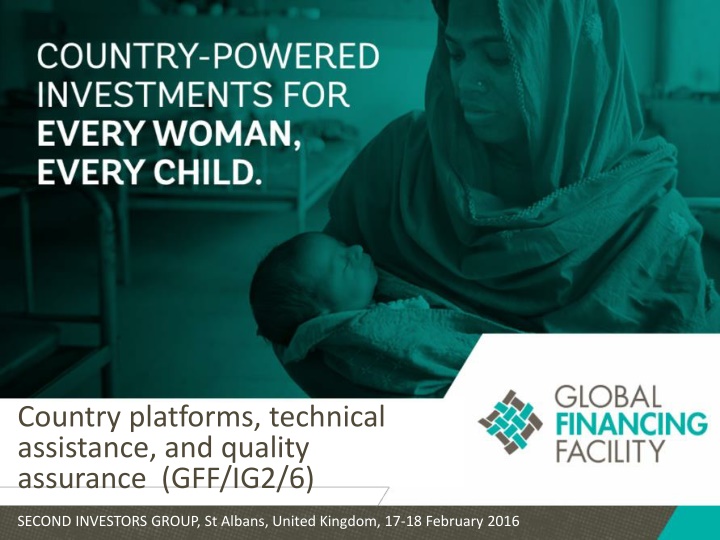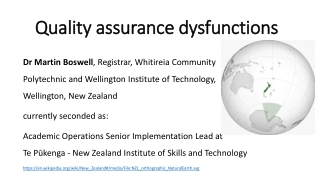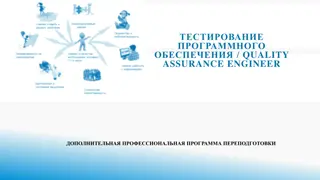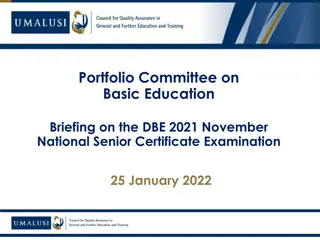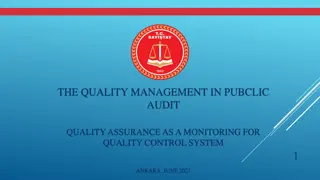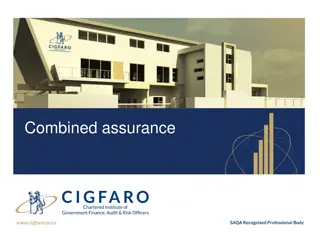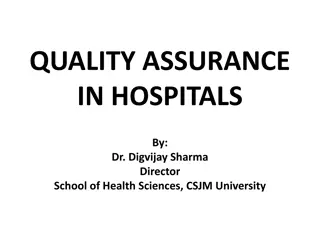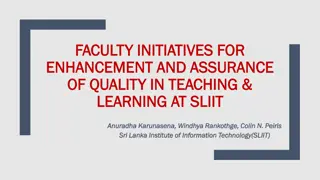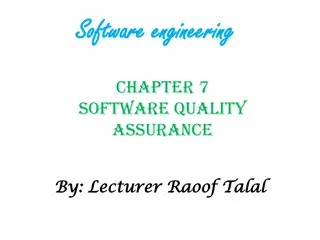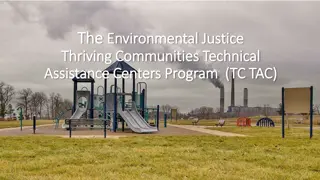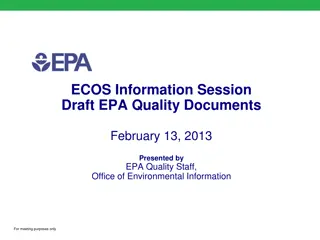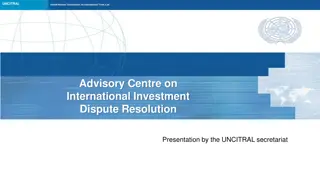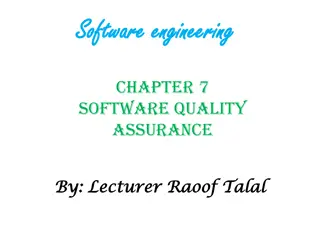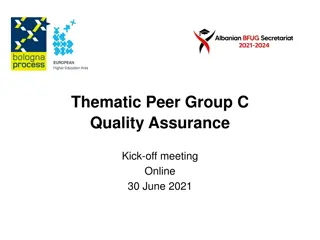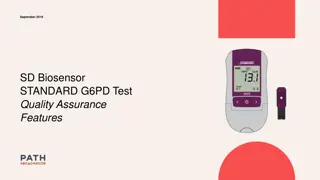Enhancing Country Platforms for Technical Assistance and Quality Assurance in Investment Strategies
The Second Investors Group in St. Albans, United Kingdom, in February 2016 focused on country platforms, technical assistance, and quality assurance in the context of investment strategies. Key feedback emphasized a bottom-up approach, holistic issue resolution, and defining quality in investment cases. The country platform, integral to the Global Financing Facility approach, revolves around multi-stakeholder processes and core functions like developing investment cases, resource mobilization, and coordination. Initial experiences highlighted the importance of existing structures, inclusiveness, and varying approaches to stakeholders.
Uploaded on Sep 13, 2024 | 3 Views
Download Presentation

Please find below an Image/Link to download the presentation.
The content on the website is provided AS IS for your information and personal use only. It may not be sold, licensed, or shared on other websites without obtaining consent from the author.If you encounter any issues during the download, it is possible that the publisher has removed the file from their server.
You are allowed to download the files provided on this website for personal or commercial use, subject to the condition that they are used lawfully. All files are the property of their respective owners.
The content on the website is provided AS IS for your information and personal use only. It may not be sold, licensed, or shared on other websites without obtaining consent from the author.
E N D
Presentation Transcript
Country platforms, technical assistance, and quality assurance (GFF/IG2/6) SECOND INVESTORS GROUP, St Albans, United Kingdom, 17-18 February 2016
Introduction Background papers on technical assistance (TA) and quality assurance (QA) circulated to Investors Group (IG) prior to first meeting (September 2015) and presented at meeting Feedback from IG: - TA and QA should be approached in a bottom-up, country- focused manner - November learning workshop in Kenya should be used as an opportunity to identify promising country experiences - Issues should be addressed holistically (including country platform) - For QA, initial emphasis should be on defining what is meant by quality in an Investment Case Country platform paper not discussed at first IG but presented and discussed in Kenya 2
Background on country platform Country platform is at the heart of the GFF approach: multi- stakeholder process that builds on IHP+ approaches, led by government Key elements defined in the Business Plan: - No prescription about the form of the country platform - Supportive of building on existing structures rather than creating new - Four functions: Development of Investment Cases and health financing strategies Mobilization of resources, including determination of which elements of the Investment Case each financier supports Coordination of technical assistance, in both the development and implementation of Investment Cases and health financing strategies Coordination of monitoring and evaluation - Minimum standards on inclusiveness and transparency 3
Initial experiences with country platforms (1/4) Process for identifying experiences: - Information gathered primarily from the Kenya workshop: >100 participants from government, civil society, private sector, and development partners in 9 countries Additional input from one-day meeting of civil society from 13 countries (in Kenya, immediately prior to workshop) - Key lessons from RMNCH Trust Fund also incorporated as appropriate Structure: - Countries are generally building on existing structures: In some cases, current mechanism fully meets needs so is being used In other countries, existing structures are the starting point but modifications are being made (e.g., to ensure inclusiveness) - Different approaches to the need for different stakeholders on Investment Case vs. health financing strategy: Some countries are using separate structures for the two Others have one overarching body with technical subcommittees 4
Initial experiences with country platforms (2/4) Functions: - Many country platforms use existing structures with a range of responsibilities, but within the GFF context, the focus in most countries has primarily been on development of Investment Cases and health financing strategies Limited experience to date with implementation, M&E Key successes: - In a number of countries very strong national ownership, with government leadership but also broad-based involvement - Non-prescriptive approach has been appreciated, with countries adapting principles to local context - High levels of interest in participating in country platforms, particularly from civil society (Kenya meeting, robust engagement from PMNCH CSO constituency, multiple reports/recommendations) 5
Initial experiences with country platforms (3/4) Practical challenges and key issues: - Governance of both the Investment Case and the health financing strategy processes not easy: requires different skill sets, actors - Inclusion of new areas (e.g., CRVS, multisectoral) not always straightforward (different actors/skill sets/approaches) - Strong government stewardship is critical (and without it parallel platforms can emerge that are more driven by development partners) - Participation of bilateral donors has been uneven - Concerns raised about transaction costs associated with having multiple platforms for GFF, Gavi, and Global Fund opportunities for integration? - Uneven experience with inclusion of civil society and private sector (related challenge: given the diversity of both, representation is difficult) - Ensuring representation of all relevant issues (e.g., all parts of the RMNCAH continuum) is not always easy without large number of participants - Sub-national platforms can be valuable (and multisectoral approaches are often easier at sub-national level) but generally have not been established 6
Initial experiences with country platforms (4/4) Key requests: - Interest in flexible tools to support the work of the country platform - Enthusiasm for further South-South exchanges - From civil society: Generally supportive of principles but concerned about uneven application of them, so interested in how minimum standards will be implemented and monitored Proposed modifications of principles on inclusiveness and transparency, and addition of independence and accountability 7
Country platforms, TA, and QA Each country platform has the ultimate responsibility for the Investment Case and the health financing strategy: - Overall quality of the documents - TA and QA Experience differs between Investment Cases and health financing strategies, so discussed separately 8
Initial experiences with TA and QA in Investment Case development: approaches taken Most countries are combining locally-hired consultants (many of whom have long-standing RMNCAH experience) with TA from in- country partners - Strong engagement from local offices of development partners (e.g., H4+, bilaterals) in many countries Additional support from global level: - Missions from World Bank and other partners - RMNCH Trust Fund has provided complementary TA resources in a number of countries Limited experience with QA to date: countries often fully engaged with process of developing the Investment Case QA a secondary priority - Some exceptions: Cameroon is contracting a local expert who has experience with the Global Fund s TERG; Ethiopia used JANS for health sector strategy (which is basis for Investment Case) 9
Initial experiences with TA and QA in Investment Case development: initial learnings and challenges (1/2) Overall, quality of Investment Cases has not been as high as desired - Prioritization is a particular concern: too many strategic plan- type documents that are not prioritized Limited in-country expertise to address new areas (e.g., CRVS, adolescents) requires dedicated support Strong interest in using local capacity (e.g., academic, NGO, private sector), although recognition that this requires building capacity in some areas Building on existing TA systems is a double-edged sword: - Use of consultants, etc., with long experience utilizes in- country capacity and skills but leads to Investment Cases that are very similar to traditional strategic plans and do not address key new elements that the GFF emphasizes 10
Initial experiences with TA and QA in Investment Case development: initial learnings and challenges (2/2) QA approaches slow to develop: - Often not easy to identify local experts who are technically strong but independent of the process to be able to provide robust QA feedback - Are there sufficient incentives for QA? Potential added-value of QA attracting additional financing is unproven Consensus on importance of iterative approach for the QA process, including need to continue during implementation Maintaining quality standards across countries will be key Disconnect between Investment Case and health financing strategy processes opportunities to address financing issues in Investment Cases missed Strong interest in understanding what the GFF means by a quality Investment Case (see next slide) 11
Proposed key elements of a quality Investment Case Clearly defined results: - Where the country wants to go (intended results), and the trajectory to get there Particular elements of the RMNCAH continuum and health systems challenges to be addressed Based on latest data and pay attention to equity, multisectoral determinants, key sources of inefficiency, and macro trends Prioritized set of investments: - Not a comprehensive description of all RMNCAH interventions but set of priority investments What changes are focused on How the service will be delivered Whom the services will focus on Where the priority target audiences live Costed and within the envelope of resources available: - Priorities should be costed and able to be implemented within the envelope of resources available - Can also contain alternate scenario with additional priorities for which funding is not currently available A plan for monitoring results (including investments needed, inc. CRVS) Clear storyline connects results and priorities Is developed in an inclusive and transparent manner 12
Initial experiences with TA and QA in health financing strategy development: approaches taken Much less expertise available in-country on health financing than on programmatic issues, and fewer good practices to draw upon Most countries are linking in-country consultants with TA from international partners - World Bank and WHO (at local, regional, and global levels) are particularly important sources of TA but key bilaterals are also providing support (e.g., USAID, GIZ, DFID) Limited experience with country-led QA to date - Globally, World Bank and WHO are developing materials outlining the key elements of a quality health financing strategy Draft indicators for it are covered in a separate session at the Investors Group meeting (background document GFF/IG2/3) 13
Initial experiences with TA and QA in health financing strategy development: initial learnings and challenges As expected, process of developing health financing strategies takes a considerable period of time (6+ months) Involvement of ministries of finance is critical but not always easy in context of ministry of health-driven process Decentralization is occurring in many countries and adds key additional complexity to process Financing decisions are often very political so can be challenging to ensure technical soundness - Many countries have a clear sense of the areas to focus (e.g., key reforms) on from the outset of the process Significant need to invest in building more local capacity Disconnect between Investment Case and health financing strategy processes synergies are being missed 14
Next steps Short-term: - Release guidance on the Investment Case (with explanation of quality Investment Case and checklist and key questions for self- assessment) - Release guidance note covering the country platform, TA, and QA - Commission process evaluation on the experience in initial countries and closely monitor progress in next set of countries - Ensure links with the Operational Framework for the Global Strategy 2.0 Medium-term: - Focus on facilitating sharing lessons between countries (e.g., strong support from Kenya evaluation for community of practice) - Develop capacity-building approaches for key areas (e.g., health financing), with a particular emphasis on strengthening local institutions - Develop operational research approach to assist countries in learning lessons (particularly on new issues such as adolescents) 15
Guidance requested from the Investors Group Key question: should the GFF continue with a decentralized approach or should a common QA mechanism be established to support countries? 16
